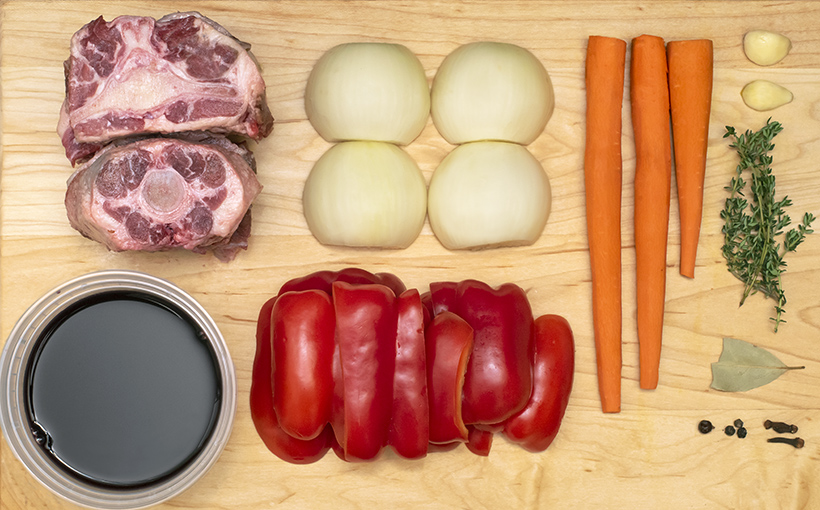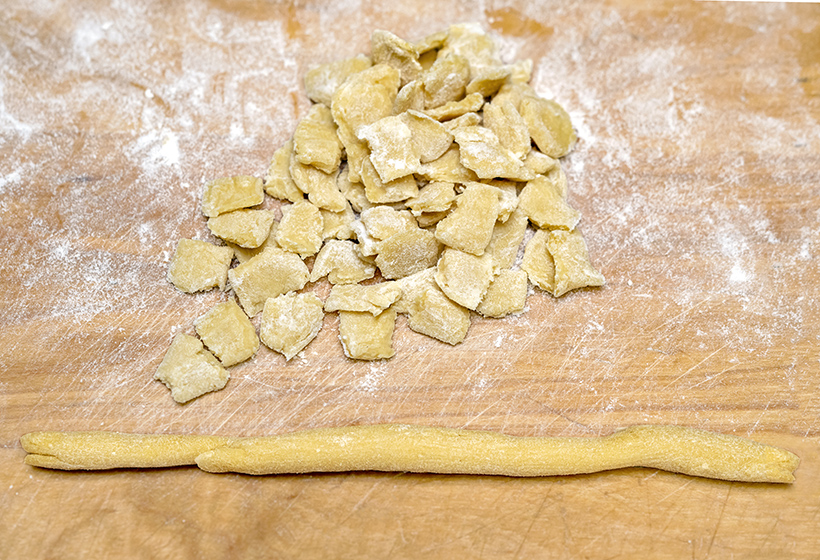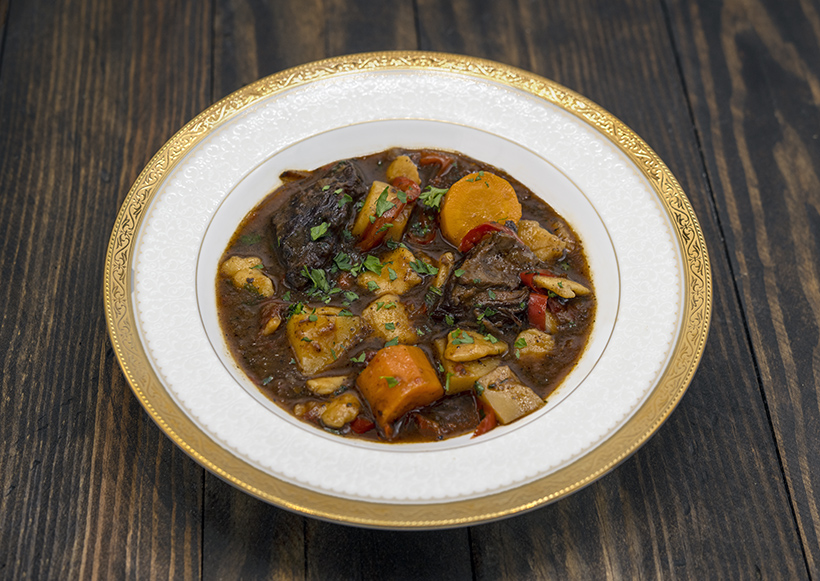Good news, loyal readers! Now that I’ve submitted the manuscript of my upcoming cookbook, The Goulash Archipelago, I will have more time to spend here at Food Perestroika! To celebrate this milestone, and to stay connected with the Hungarian theme of my last three posts, here’s a goulash recipe that will appear in the book. As a victim of the dubious pun that serves as the book’s title, I had to find a way to include a recipe for goulash – typically a Hungarian dish – in a collection of recipes from the former Soviet Union. No problemo! In its majestic grandeur, the USSR did indeed have a common border with Hungary, in Transcarpathia. Separated from the rest of the country by the Carpathian Mountains, this region of Ukraine belonged for centuries to the Kingdom of Hungary and then to the Austro-Hungarian Empire. Tossed between Hungary and Czechoslovakia in the first half of the 20th century, it was finally annexed by the USSR in 1945. So it comes as no surprise that people in Transcarpathia eat goulash and other Hungarian dishes – I even have a Transcarpathian cookbook to prove it (Transcarpathian Cuisine, by one Y.V. Dmityerko).
What, then, is the difference between a Hungarian goulash and its Transcarpathian cousin? It’s rather tenuous… At most, some Transcarpathian recipes seem to admit a few additional ingredients (carrots, herbs) that would shock Hungarian purists. Goulash can be prepared as a soup or as a stew, and here I’m choosing the latter, served with cute little pasta called chipetki (or csipetke in Hungarian; which means “pinch”). Back in 2013, I published a recipe for goulash sauce, exclaiming “Delicious applications will follow soon!” Eight years later, the time has finally come. The goulash base below is pretty much the same as in that old post, but the rest differs since I’m taking inspiration from a Transcarpathian dish.

Goulash base
Yields 4 servings (about 1200 g)
600 g oxtail, cut into pieces
salt
15 g canola oil
100 g peeled carrot, large dice
200 g peeled onion, large dice
200 g cored and seeded red pepper, large dice
5 g peeled garlic clove
300 g red wine
3 cloves
3 peppercorns
1 juniper berry
6 thyme sprigs
1/2 bay leaf
1000 g water
- Season the oxtail with salt. Heat the oil in a pressure cooker over high heat, and sauté the oxtail until brown on all sides. Add the carrot, onion, red pepper, and garlic, and cook for a couple minutes, stirring regularly. Add the red wine, cloves, peppercorns, juniper berry, thyme, and bay leaf, then simmer for another 2-3 minutes, until the wine has reduced by about half.
- Add the water, then cover, bring to pressure, and cook under pressure for 1 hour. Let cool for 30 minutes.
- Take out the oxtail and reserve for another recipe (if you pick the meat off the bones, you can use it to make an excellent pasta sauce). Pass the stock through a chinois, pressing to extract as much liquid as possible from the vegetables. Discard the solids. Transfer the stock to plastic containers and refrigerate for at least 8 hours.
- Remove the fat that congeals on top of the stock. Reserve separately.

Chipetki
Yields 4 servings
100 g AP flour, plus some for dusting
50 g (about 1) egg, beaten
1.5 g salt
- Place the flour, egg, and salt in a bowl. Mix with a fork, then knead by hand for a couple minutes. Since there is no water added, this will be a pretty hard dough. Wrap in plastic film and let rest for 1 hour.
- Cut the dough into 8 pieces. Proceeding in batches, shape each piece into a cylinder the thickness of a pencil, then tear into small pieces the size of peas, and pinch them between your fingers to flatten them. They will all be slightly different shapes and sizes; that’s normal. Transfer to a baking tray lined with parchment paper and dusted with flour, and let rest for at least 30 minutes. The chipetki are expected to dry out, so they don’t need to be covered with plastic film.

Transcarpathian goulash
Yields 4 servings
800 g boneless beef short ribs, cut into 4-5 cm cubes
salt
60 g fat from the goulash base (or 45 g canola oil)
200 g peeled onion, small dice
7 g smoked paprika
200 g whole peeled canned tomatoes, crushed, with some of their juice
goulash base
8 g corn starch
280 g cored and seeded red peppers, sliced
360 g peeled Yukon Gold potatoes, large dice
160 g peeled carrots, large dice
chipetki
10 g parsley, chopped
- Season the short ribs with salt. Melt 2/3 of the fat from the goulash base in a pot over medium-high heat. Add the meat, and sauté until golden brown on all sides, stirring regularly. Transfer the meat to a bowl, and reserve.
- Add the remaining fat to the same pot, and sauté the onion until golden brown. Stir in the paprika and cook for a few seconds. Return the meat to the pot, then add the canned tomatoes and about 1/8 of the goulash base. Cover with a lid left ajar, and cook in a 120 C / 250 F oven for 5 hours, stirring every couple of hours. If the pot runs out of liquid, add a little bit more goulash base.
- In a saucepan over medium-high heat, reduce the remaining goulash base to 700 g. Mix the corn starch with a little bit of base in a small bowl, then stir back into the saucepan with the rest.
- Take the pot out of the oven, and add the thickened stock to the meat, along with the red peppers, potatoes, carrots, and chipetki. Cover with a lid and simmer on the stovetop over low heat for 1 1/2 hours, stirring occasionally, until the potatoes are tender and the pasta is cooked. The goulash should resemble a stew more than a soup; if the sauce is too liquid, remove the lid and reduce over medium heat for a few minutes. Rectify the seasoning, and then mix in half of the parsley.
- Divide the goulash between bowls and sprinkle with the remaining parsley. Serve immediately.


